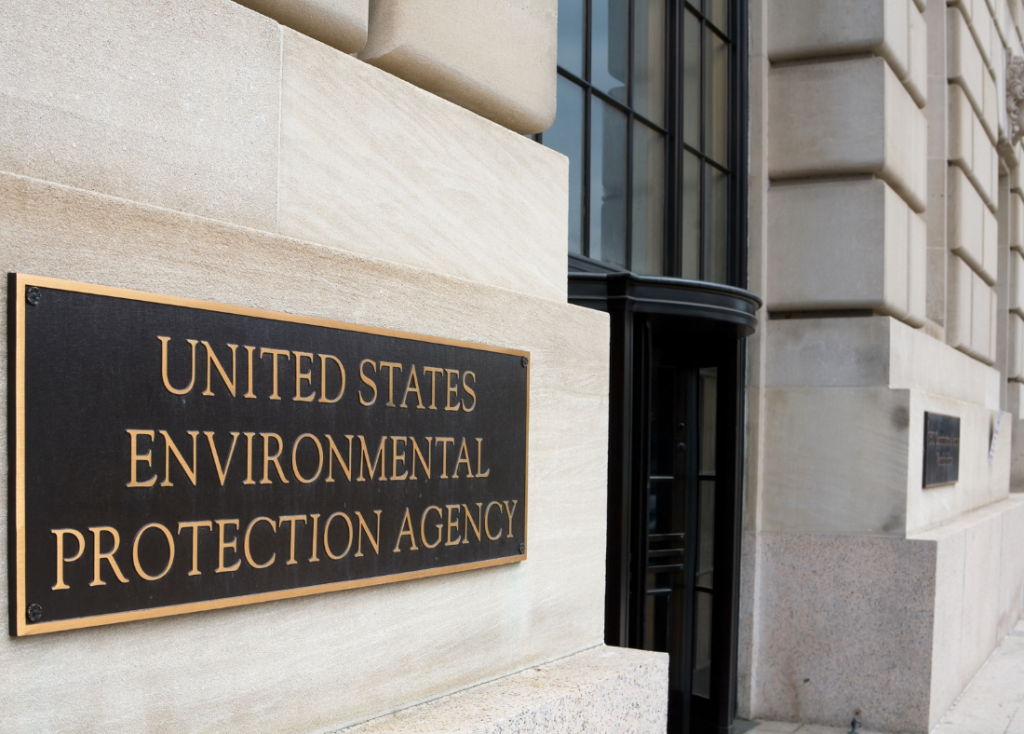By Diego Sandoval (He/Him), Youth v. Oil Media Team Lead

2024 saw the second-highest number of billion-dollar weather disasters in US history, reaching 27, shyly missing the previous 2023 record of 28. 9 out of the 10 years with the most billion-dollar weather disasters in US history occurred in the last decade, clearly illustrating our trajectory towards an increasingly expensive future. With this trend displayed, the assumed course of action would be to initiate a focused plan to mitigate the impacts of these disasters, allocate appropriate funds for their immediate response, and limit factors contributing to these occurrences. But what actions are we seeing in our government to respond to these effects?
The primary agency tasked with addressing climate change- an influential factor in the increasing intensity of climate disasters- is the Environmental Protection Agency (EPA). It is an independent department within the executive branch of the US Federal Government. The EPA was founded in 1970 to ensure that Americans have access to clean air, land, and water, only after lakes took fire, oil spills ravaged coasts, smog killed NYC residents, and excessive auto-exhaust caused birth defects.
Today, the EPA is run by none other than former New York Congressman Lee Zeldin, who in 2014 had denied climate change as a serious issue to be addressed. Since then, Zeldin has maintained a poor climate voting record, including voting against the Inflation Reduction Act, which would invest billions in clean energy and climate solutions. He also received over $410,000 during his election campaigns from the oil and gas industry, which heavily suggests this is where his allegiance lies.
Lee Zeldin has wasted no time in his position by announcing “31 historic actions to power the Great American Comeback” Among these actions are reconsidering air toxins and quality standards, as well as vehicle taxes and national emissions standards.
Zeldin has since worked to shut down the EPA’s scientific research arm, the Office of Research and Development, which is responsible for the foundation of the decisions made to safeguard human health and ecosystems from environmental pollutants. Other department arms included in the cuts are the Environmental Justice and the Diversity, Equity, and Inclusion arms, which are responsible for advancing environmental justice as well as enforcing civil rights laws. The decision to eliminate these arms greatly impacts under-represented communities, whom these arms were meant to serve, who disproportionately face the impacts of environmental injustice.
On July 18th, an immense reduction in force (RIF) was announced to deliver $748 million in savings and successfully eliminate 3,700 positions, bringing the January total of 16,155 positions down to 12,488 positions. This devastating restructuring of the EPA raises questions regarding its capacity and ability to respond to environmental hazards. These management cuts come hand in hand with major cuts to the funds allocated to the EPA as a whole.
Regulatory weakening under the Trump Administration’s EPA include the removal of then a special waiver under the Clean Air Act that allows California, historically the home of some of the worst air pollution in the world, to set the state’s zero-emission vehicle mandate, which required that all new passenger cars and trucks sold in California be zero-emission vehicles by 2035. Additionally, the CAFE standards, which ensure that the fuel efficiency of new cars meets certain criteria, were weakened when the EPA removed the fees enforced if carmakers failed to meet the standards, thereby ending the incentive for car manufacturers to produce more fuel-efficient cars.
Among all the controversial and gruesome decisions employed by the EPA, the most disastrous is now being considered, the proposal by the EPA to repeal the 2009 Endangerment finding, which declared greenhouse gas emissions as a danger to public health which can be regulated under the Clean Air Act. This builds on the 2007 Supreme Court ruling in Massachusetts v. EPA, which found that the agency is required to regulate carbon dioxide and other greenhouse gas emissions. Now, the EPA argues that the 2007 decision “explicitly did not hold that EPA was required to regulate these emissions from these sources.” To overturn the Endangerment finding, the EPA found five scientists who, working in secret, were willing to go against the overwhelming scientific consensus that climate change is a direct threat to human health.
In a win for fossil fuel companies, the dismantling of this key finding will remove any legal basis the federal government has to regulate greenhouse gas emissions causing climate change.
This includes the CAFE standards. It also includes tailpipe emission rules, which would envision at least half the new cars sold in the U.S. being electric or plug-in hybrids by 2030. Tailpipe standards alone would have saved more than 7 billion metric tons of CO2 equivalent– comparable to 7 times the entire country of Japan’s total yearly emissions.
In a period of US history most threatened by the impacts of climate change, we are seeing the EPA’s decisions being manipulated by the interests of oil and gas industries, and the politicization and complete disregard of human health in favor of profit and political good standing within a corrupt administration.
However, the EPA cannot change this rule without listening to the public. Now is the time for all of us to testify to UPHOLD the Endangerment Finding.
